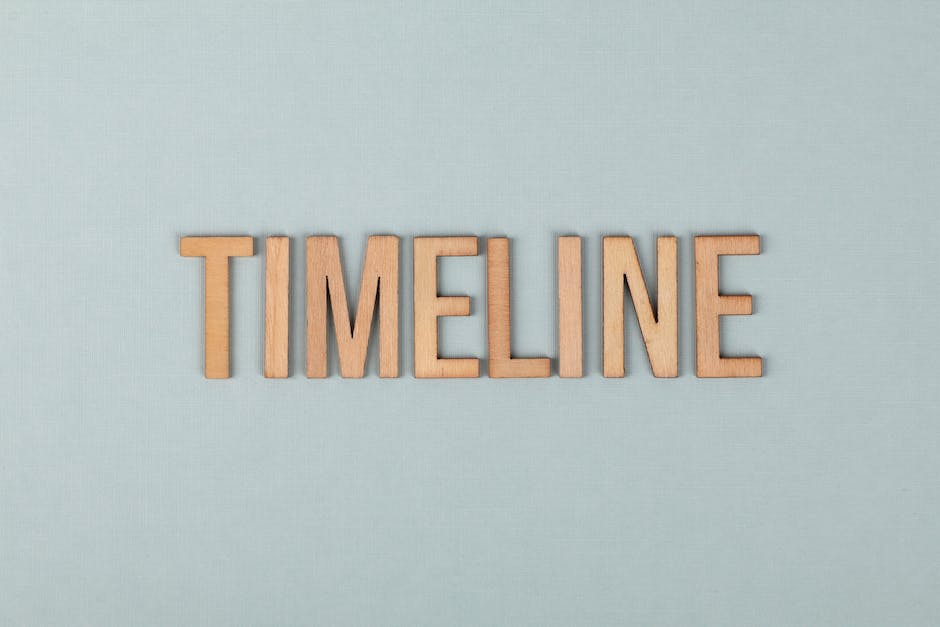Crafting Your Final Year Engineering Project Proposal
In the ever-changing field of engineering, it’s imperative for scholars and researchers to continually seek opportunities to deepen their understanding. The undertaking of a final year engineering project offers just such a circumstance. This pursuit not only cements the foundational skills cultivated over one’s academic journey, it also provides an avenue for originality and innovation, where ideas are tested, and theory meets practice. One key element to streamline this process and enhance its potential for success is the development of a comprehensive project proposal. This venture obliges students to articulate their research ideas, establish the relevance of their study, and propose a strategic plan to achieve their goals. The project proposal, thus, becomes a roadmap, shaping the course of the research and serving as a reference point throughout its execution.
The Introduction
Introduction to Your Final Year Engineering Project Proposal
Starting the write-up for your final year engineering project proposal can feel daunting. Nonetheless, it’s a crucial step in organizing your thoughts, defining your objectives, and showcasing your project’s significance. The introduction section is designed to provide proper context, set the stage for your research proposal, and explain why your project is worth pursuing. Here is a step-by-step guide to help you craft an effective introduction for your engineering project proposal.
Step 1: Understand Your Project’s Background
Begin your introduction by putting your research project into context. This involves briefly explaining what led to the conception of your project. Was there a problem you noticed in the field? Is there a gap in current research, or are you building upon existing knowledge? Such information provides a backdrop that helps anyone reading your project proposal understand why you’re embarking on this specific research.
Step 2: Formulate Your Research Question
The research question is the heart of your project. It’s what you seek to answer or the problem you aim to solve through your research. This question should be clearly stated in your introduction.
Step 3: Define Your Project’s Objectives
Next, define the objectives of your research project. These are the steps you’re going to take or the methods you will use to answer your research question. State these objectives clearly so that anyone reading your proposal can understand what you aim to achieve through your project.
Step 4: Highlight the Significance of Your Project
To conclude your introduction, elaborate on the significance of your project. This is where you explain how your research will contribute to the broader field of engineering. What new knowledge will it bring? How can it be applied in the real world? Inform the reader about who stands to benefit from your research and how they will do so.
Remember, the introduction sets the stage for your entire proposal and will likely be the first impression your reader has of your project. Therefore, ensure it’s clear, concise, and compelling.

Literature Review
Understanding Literature Review in an Engineering Project Proposal
Carrying out a comprehensive literature review is a critical step when preparing your final year engineering project proposal. This procedure helps to frame your project, showing how it contributes to the existing body of knowledge in your engineering domain. Extra attention should be given to the most impactful and relevant studies that are directly subjected to your proposed project.
Identify Your Research Domain
Begin by identifying your research domain. This is the specific area in engineering that your work fits into. It could be Civil Engineering, Electrical & Electronics Engineering, Computer Engineering, or any other sub-discipline. Having a clear understanding of your domain will help narrow down the expansive body of literature to the studies that are most relevant to your project.
Search for Relevant Literature
After identifying your research domain, you need to search for past research studies related to your project. Use academic databases such as Google Scholar, IEEE Xplore, JSTOR, and others to find these studies. Ensure to use keywords that are associated with your project during your search.
Analyze the Literature
Once you have gathered several literature sources, it’s time to critically analyze them. Review each source to understand its research methodology, importantly its results and discussions. This would help you grasp the state of the art, and the existing body of knowledge in your domain, and also help identify the gaps in the literature that your research could potentially cover.
Structuring Your Literature Review
Begin by providing an overview of the relevant studies in your domain. Discuss their methodologies, findings, and implications. Highlight where your project fits within this existing body of knowledge and how it can add value.
Also remember to highlight the advantages, disadvantages, and limitations of the previously conducted works. This helps provide a rationale for the new methodologies you’re proposing for your project, which essentially should improve on these past works.
Cite Your Sources
Finally, ensure to appropriately cite all the sources that you refer to in your literature review. This can be done in the format preferred by your academic institution, be it APA, MLA, or Chicago Style. Proper citation ensures the integrity of your proposal and gives credit to the researchers who have contributed to your knowledge.
Taking time to conduct an exhaustive literature review strengthens your project proposal by showing that your work is grounded in existing research and that it has the potential to contribute to the ongoing academic conversation in your engineering domain.

Project Design and Methodology
Project Design and Methodology in Final Year Engineering Project Proposal
For your final year engineering project proposal, you need to consider the design and methodology section seriously. This section typically outlines your approach to solving the research problem, justifies the chosen methodology, and provides a detailed description of the project design. This reflects your comprehension of the project and displays your capacity for effective research work.
Identifying The Research Problem
Start off by clearly outlining the problem your project plans to solve. This could be a standing issue in your field of study or a hypothetical situation that requires an innovative solution.
Justifying the Chosen Methodology
Choosing a precise methodology to solve your research problem is pivotal. Clarify why have you elected this methodology and why it is suitable for your project. Describe how this method will effectively tackle the problem and potentially yield positive results. Show familiarity with past works or studies that have employed the same methodology to build credibility in your justification.
Detailed Project Design
Elaborate on the details of the project design. This design should align with your problem and chosen methodology. Focus on detailing the design implementation – include a timeline, resources needed, and the features of the design.
To make this section more comprehensible, you can incorporate visual aids like flowcharts, diagrams, or timelines. These elements can help your readers to better understand the design.
Risk Assessment and Mitigation
Assess the risks involved in your design and methodology. This portrayal of foresight is a powerful statement on your understanding of the project. It will show that you have considered all aspects and ready to handle potential setbacks. Elucidate the proactive measures in place to mitigate these projected risks.
Summary
Conclude this section by summarizing your approach and chosen methodology, and reminding the reader of their significance in solving your research problem. This conclusion should stress that your project has been meticulously planned, taking into consideration all possible outcomes.
Remember, your project design and methodology section is a direct reflection of your understanding of the project and research skills. Make sure to articulate this section with clarity, detail, and confidence, as it plays an integral part in impressing your proposal evaluators.

Proposed Timeline and Budget
Proposed Timeline for Your Final Year Engineering Project
The success of your final year engineering project depends largely on following a well-structured, feasible timeline. It’s important to be familiar with project management tools and techniques that can aid in creating a realistic timeline. Here’s how:
- Begin by defining your project and its overall objectives. This will provide a clear vision of the goal you are set to achieve.
- Break your project down into manageable, measurable tasks. Each task should lead to a specific outcome that contributes to your overall objective.
- Estimate the time needed for each task. This might involve doing some research or asking experienced mentors for input.
- Arrange the tasks into a logical sequence, taking into account any dependencies or prerequisite tasks.
- Assign tentative dates to the start and completion of each task. This becomes your first draft timeline.
- Revisit and revise your timeline as needed. Remain flexible as your project progresses, as some tasks may take more or less time than expected.
Successfully following through with your timeline requires dedication and commitment. Always keep in mind that the timeline serves as a guide to keep your project on track and to accomplish your goals within the proposed time frame.
Determining the Budget for Your Project
Another crucial aspect of your project proposal is the budget. The budget gives an overview of the financial aspect of your project. Below are some steps to guide you in preparing your project budget:
- List all potential costs of your project. This includes materials, equipment, software, licenses, travel, and any other relevant expenses.
- Do some research to estimate the cost of each item. Supplier websites and catalogs can be useful for this.
- Add these costs to get a total estimated budget. Always overestimate costs to account for unexpected expenses and price fluctuations.
- Also, make a provision for contingencies or unforeseen costs. This provision is typically around 10% of the total expected project cost.
- Once your project is underway, keep a close eye on your budget and review it regularly. Be prepared to make adjustments as necessary.
Drafting a project proposal including a realistic timeline and a detailed budget enhances the chances of your project’s acceptance. These sections will show that you have thoroughly considered all aspects of your project and have plans in place to ensure its completion within the given constraints.

Constructing a well-defined and thorough engineering project proposal is no small feat. It requires methodical planning, detailed research, and clear communication. However, with a firm grip on the essential components – Introduction, Literature Review, Project Design and Methodology, and Proposed Timeline and Budget – the task becomes a structured endeavor, guiding students in their navigation of the expansive field of engineering research. Equipped with this vital precept, scholars and researchers become more than just students completing a project; they transform into pioneering contributors to their field of study, their innovative ideas pushing the boundaries of engineering principles and their impacts propelling the discourse of engineering forward.